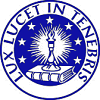The History of the Huguenots and Waldensians in Pictures
The galleries with historical images of the Huguenots are NOT FULLY TRANSLATED yet. Please enjoy our rich collection of pictures and don't mind the German captions. We'll do our best to provide translations as soon as possible.
Huguenot Portraits A - Z - Translated!
153 Pictures
in 5 chapters in alphabetical order
from Achard to Zwingli
A - B | C - D | E - H | J - R | S - Z
Romeyn de Hooghe (1645-1708)
Tyrannical atrocities against the Reformed Protestants of France
The Dutch engraver Romeyn de Hooghe took part in the "War of Pictures" against Louis XIV of France with extremely brutal represantations. He took the side of the Reformed (Huguenots) in France and depicted the atrocities they suffered at the hands of the royal dragoons on two large panels.
The History of the Huguenots as illustrated by Chodowiecki
Nicholas Daniel Chodowiecki was born in Danzig on 16th October 1726 as son of the Polish corn merchant Gottfried Chodowiecki (1698-1740) and Marie Henriette Ayrer. His father taught him miniature painting. His mother, a descendant of the Huguenot family de Vaillet, brought him up in the French-Reformed tradition. Daniel Chodowiecki remained true to this tradition throughout his life.
Biography of Chodowiecki » | Picture galleries »
Calvin
It was Calvin (1509-1564) who by his writings gave the reform movement in France its impetus. He was born in Noyon in Picardy in 1509 and studied Law and Theology in Paris, Orléans and Bourges. Around 1533 he converted to Protestantism and was forced to leave Paris in 1535.
The Wars of Religion after Merian
The Theatrum Europaeum of Matthäus Merian whose 24 volumes appeared between 1633 and 1738 contained around 720 copper engravings. They illustrated historical texts and also dealt with the history of the Huguenots and their persecution. Matthäus Merian, Jan Luyken and Romeyn de Hooghe were among the engravers. A selection is shown here. Some of these engravings are from "Die Weltchronik" by Johann Ludwig Gottfried which appeared in 1629 and from the "Theatre des Martyrs" by Jan Luyken. This work was published in 1698 by Pierre van der Aa in Leyden.
Iconoclastic Riots
Throughout the Reformation in the 16th century rioters entered churches to destroy statues, paintings, and stained glass windows. The iconoclasts were acting in accordance with the Second Commandment. According to reformes like Calvin the representation of Christ and the saints was idolatry.
Decalogue plaques
A plaque with the Ten Commandments hung in a prominent position in every Reformed Huguenot church. The plaques were made of wood, stone or marble. Quite often they were adorned with representations of Moses or Aaron. They are also to be found in the chapels of palaces and in halls, and even in private houses.
Communion tokens
In accordance with the strict moral discipline imposed by Calvin, only those members of the congregation who were considered worthy received a communion token from their elder. They were not made of precious metals, but of lead or tin.
The Massacre of St Bartholomew's Day
It was in France of all places, a country economically and culturally to the fore in Europe, that the first pogrom in modern times took place in the early hours of 24th August 1572. Two thousand Huguenots were murdered in the houses and streets of Paris. Another 10,000 were killed in other French towns in the following weeks.
The Church of the Desert
When the Edict of Nantes was revoked by Louis XIV in Ocotber 1685, Protestant churches were destroyed. It was forbidden to hold Protestant services anywhere. Many Huguenots left France. Some of those who remained began to hold services in the open air in secluded places the Church of the Desert was born.
The Flight of the Huguenots
Around 170,000 Huguenots left France within a few months. They were looking for a haven where they could practise their Reformed faith in freedom. The Huguenots were relgious refugees.
Reception of the Huguenots
44,000 Huguenots fled to Germany where they were able to build up a new life in many towns and villages. The territories where large numbers of them settled were Prussia, Hesse-Kassel, the Rhein/Main region, the Palatinate and Württemberg and in the Hanseatic towns and Lower Saxony also.
|


